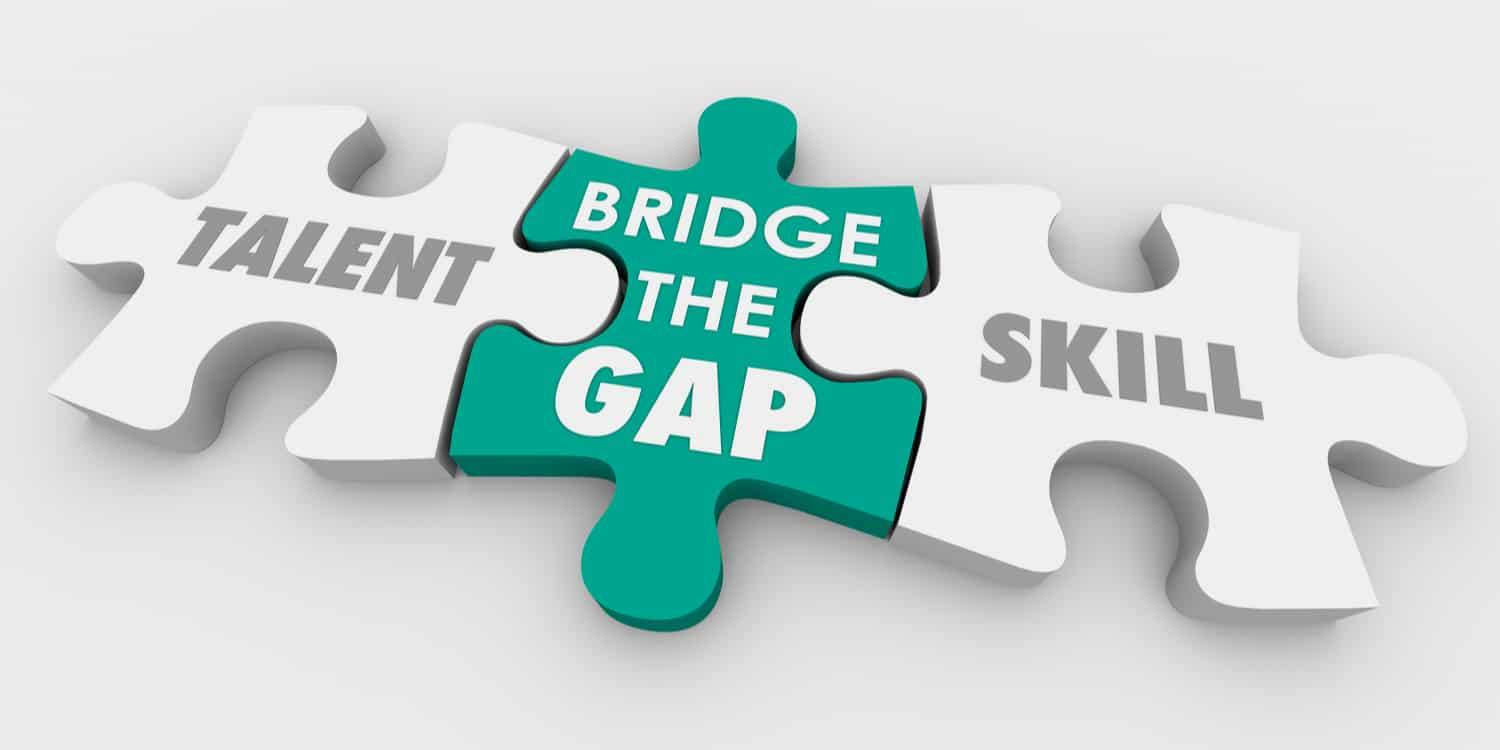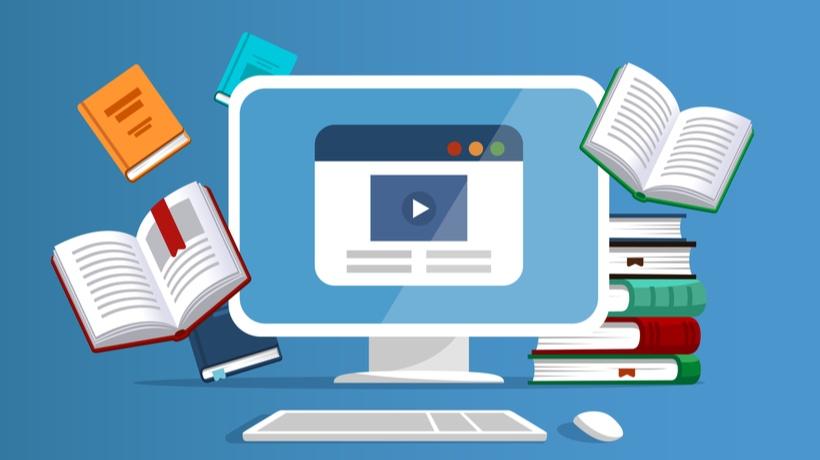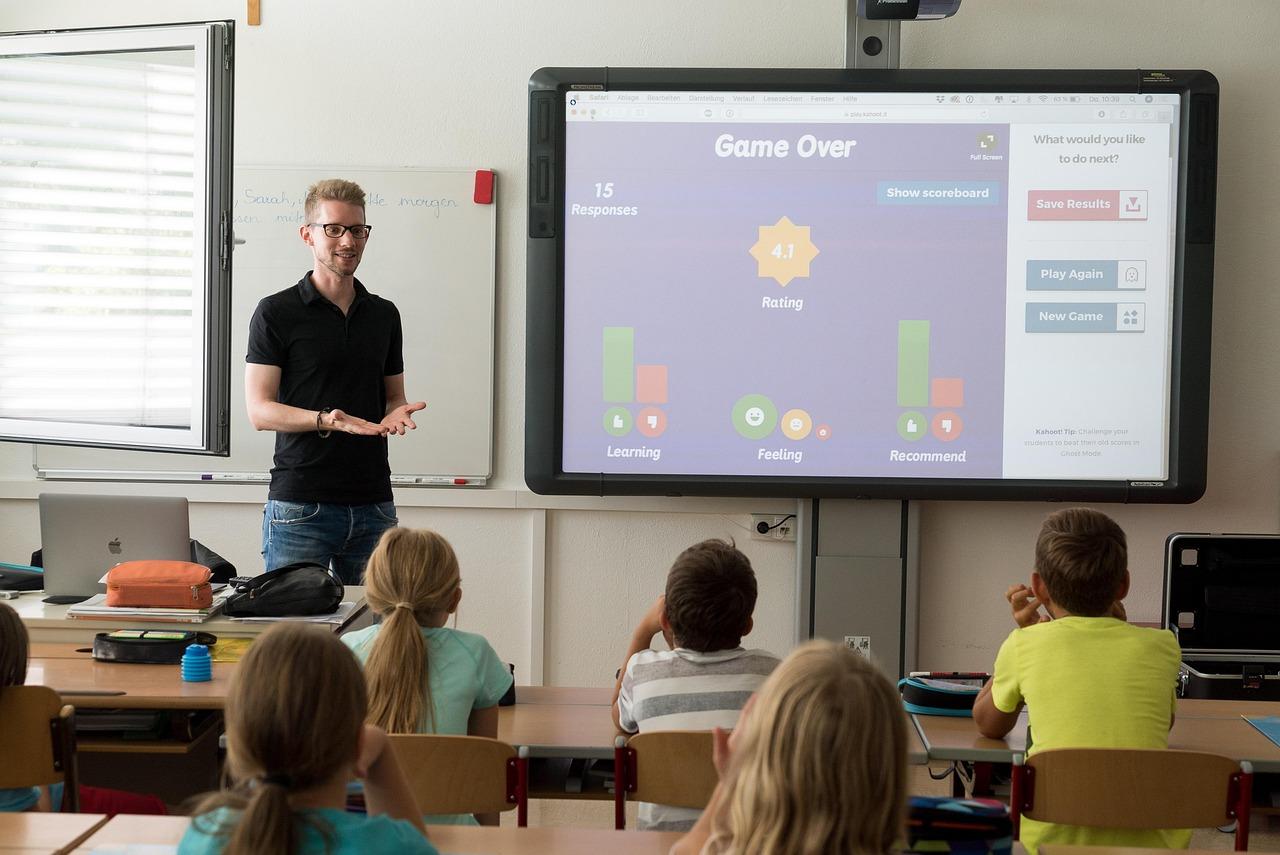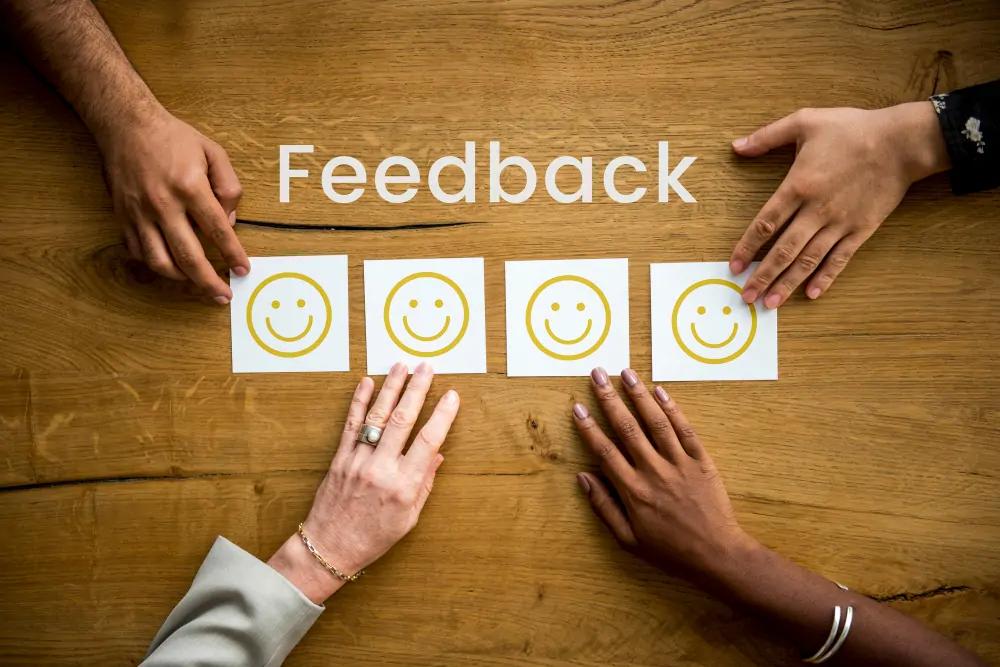In today’s fast-paced world, where change is the only constant, the need for effective training and upskilling of project teams has never been more critical. Traditional training methods often fall short, struggling to keep up with the dynamic demands of modern workplaces. Enter e-learning—a powerful tool that not only bridges these gaps but also transforms the way we approach team development. Imagine empowering your project teams with the flexibility to learn at their own pace, access a wealth of resources at their fingertips, and engage in interactive content that keeps them motivated and connected. In this article, we’ll explore how e-learning can revolutionize your training efforts, enhance team collaboration, and ultimately drive project success. Whether you’re looking to refresh skills, introduce new methodologies, or foster a culture of continuous improvement, e-learning is your ticket to a more skilled and agile project team. Let’s dive in and discover how you can leverage this innovative approach to unlock your team’s full potential!
Understanding the Power of E-Learning in Project Management
E-learning has revolutionized the way project teams can develop their skills and knowledge. The flexibility it offers allows members to learn at their own pace, making it an ideal solution for busy professionals who juggle multiple responsibilities. By integrating e-learning modules into your training programs, you can ensure that your team stays updated on the latest project management methodologies without the constraints of traditional training formats.
One of the key benefits of e-learning is its ability to provide tailored content that meets the specific needs of your project teams. This customization can lead to enhanced engagement and better retention rates. Consider incorporating the following into your e-learning strategy:
- Interactive courses: Use quizzes and simulations to reinforce learning.
- Video tutorials: Offer visual guidance on complex project management tools.
- Case studies: Present real-world examples that resonate with your team’s experiences.
Additionally, e-learning platforms often come with tracking and reporting features that allow team leaders to monitor progress and identify areas where further training may be needed. This data-driven approach empowers project managers to make informed decisions about where to allocate resources for maximum impact.
| Feature | Benefit |
|---|---|
| On-demand access | Learn anytime, anywhere |
| Cost-effective | Reduces travel and accommodation costs |
| Scalability | Easy to train large teams simultaneously |
To further enhance the e-learning experience, encourage collaborative learning by integrating discussion forums or peer review sessions. This not only fosters a sense of community among team members but also allows for the sharing of diverse perspectives and solutions. By nurturing an environment of continuous learning, your project teams can become more agile, innovative, and prepared to tackle challenges head-on.
As the landscape of project management continues to evolve, it’s essential to embrace tools that facilitate ongoing development. E-learning not only equips your teams with the necessary skills but also instills a culture of adaptability and resilience. By investing in this powerful training method, you’re not merely enhancing knowledge; you’re building a future-ready workforce capable of driving successful projects to completion.

Identifying Skills Gaps and Training Needs in Your Team
In today’s fast-paced work environment, understanding the specific skill gaps within your project team can be the difference between meeting deadlines and falling behind. Identifying these gaps requires a keen eye and a structured approach. Start by conducting regular assessments to evaluate the current skill levels and competencies of your team members. This could be through self-assessments, peer reviews, or manager evaluations.
Once you have a clear picture of where your team stands, you can pinpoint the exact areas where further training is needed. Consider focusing on the following key areas:
- Technical Skills: Are there software tools or technologies that the team struggles with?
- Soft Skills: Is there a need for better communication, leadership, or teamwork abilities?
- Project Management: Are team members familiar with methodologies like Agile or Scrum?
After identifying the skills gaps, the next step is to address these needs through tailored training programs. E-learning platforms offer an excellent solution, providing flexibility for your team to learn at their own pace. Look for courses that align with your specific skill gaps, and encourage team members to engage with the content actively.
Here’s a simple table to help you visualize potential training topics and the corresponding skill gaps:
| Skill Gap | Recommended E-Learning Course | Expected Outcome |
|---|---|---|
| Data Analysis | Excel for Data Analysis | Improved decision-making through data insights |
| Agile Methodologies | Introduction to Agile | Enhanced project delivery efficiency |
| Effective Communication | Mastering Communication Skills | Stronger teamwork and stakeholder engagement |
Encouraging continuous learning will not only help bridge the skills gaps but also foster a culture of growth within your team. Be sure to follow up on the training outcomes and gather feedback to refine future training initiatives. By positioning e-learning as a core element of your development strategy, you empower your team to thrive and adapt in an ever-evolving project landscape.

Choosing the Right E-Learning Platform for Your Project Goals
When embarking on the journey to train and upskill your project teams, selecting the appropriate e-learning platform is pivotal. The right choice can significantly impact the effectiveness and engagement of your training initiatives. Here are some key considerations to guide you through the selection process:
- User Experience: An intuitive interface can encourage participation. Look for platforms that offer easy navigation and a smooth learning experience.
- Customization: Your training needs are unique. Choose platforms that allow you to customize content, ensuring that it aligns perfectly with your project goals.
- Integration: Consider how well the platform integrates with your existing tools and systems. Seamless integration can streamline processes and enhance learning effectiveness.
- Analytics and Reporting: Insightful analytics can provide valuable feedback on learner progress, helping you to refine your training approach over time.
- Support and Resources: Look for platforms that offer robust support, including tutorials, customer service, and community forums to assist both trainers and learners.
Another critical factor is the type of content delivery. Depending on your team’s diverse learning preferences, you might want a platform that supports various formats, such as:
- Video lessons
- Interactive quizzes
- Discussion forums
- Live webinars
To help you visualize the options available, consider the following comparison table of popular e-learning platforms:
| Platform | Key Features | Best For |
|---|---|---|
| Udemy for Business | Extensive course library, analytics | Teams seeking variety |
| LinkedIn Learning | Integration with LinkedIn, personalized recommendations | Professionals looking to upskill |
| Adobe Captivate | Custom content creation, mobile-friendly design | Organizations needing tailored courses |
| Moodle | Open-source, highly customizable | Teams with specific technical needs |
Lastly, don’t underestimate the power of community. Engaging with other users can provide insights and best practices for maximizing your e-learning investment. Seek platforms that foster collaboration and knowledge sharing among users, as this can inspire fresh ideas and enhance team cohesion during training.

Creating Engaging and Relevant Content for Your Team
In today’s fast-paced work environment, creating content that resonates is key to maintaining an engaged and motivated project team. To effectively leverage e-learning for training and upskilling, it’s essential to craft interactive and immersive experiences that speak directly to your team’s needs. This can be achieved by understanding their daily challenges and the skills they aim to develop.
Start by identifying the core competencies that are critical for your team’s success. Focus on delivering content that is not only relevant but also applicable to their day-to-day tasks. Consider the following elements:
- Real-world scenarios: Use case studies and examples that your team can relate to.
- Microlearning: Break content into bite-sized modules to facilitate easier absorption of information.
- Interactive assessments: Incorporate quizzes and activities that encourage participation and reinforce learning.
Additionally, leverage multimedia resources to enhance engagement. Integrating videos, infographics, and podcasts can cater to various learning styles and ensure that the content remains fresh and stimulating. By providing different formats, you not only enrich the learning experience but also increase retention rates among team members.
To further personalize the training, consider implementing a feedback mechanism. This can be achieved by:
- Surveys: Collect input on training effectiveness and areas for improvement.
- Discussion forums: Encourage team discussions around the content to foster collaboration and peer learning.
- One-on-one check-ins: Offer personalized support to address individual learning needs.
keep the content dynamic and continually updated. In a rapidly changing business landscape, ensuring that your training materials reflect the latest trends and technologies is crucial. Utilize analytics to track engagement and success rates, allowing you to refine your approach and keep your project team equipped with the most relevant skills.

Incorporating Interactive Elements to Enhance Learning Retention
When it comes to training project teams, engaging learners through interactive elements can significantly improve their ability to retain information. Effective e-learning modules go beyond static content; they invite users to participate actively, making the learning experience both enjoyable and memorable. Here are some fantastic ways to incorporate interactive elements into your training programs:
- Quizzes and Assessments: Regular quizzes not only reinforce learning but also provide instant feedback. Consider integrating short assessments at the end of each module to gauge understanding and retention.
- Simulations: Using real-world scenarios in simulations allows learners to apply their knowledge immediately. This hands-on approach builds confidence and helps solidify concepts.
- Discussion Forums: Creating an online space for learners to discuss topics fosters collaboration and idea-sharing. Encourage participants to ask questions and share insights, enhancing collective understanding.
- Interactive Videos: Incorporate clickable elements in videos, such as quizzes or links to additional resources. This dynamic format keeps learners engaged and encourages them to explore the content further.
Additionally, gamification is a powerful strategy to motivate learners. By incorporating game-like elements, such as points, badges, and leaderboards, you create a sense of achievement and competition. This not only makes learning fun but also encourages continuous engagement. Consider implementing a points system for completed modules or contributions in forums, which can lead to tangible rewards for top performers.
Another effective method is the use of branching scenarios, where learners make decisions that impact the outcome of the training. This approach not only tests their knowledge but also enhances critical thinking skills as they navigate through various paths based on their choices.
| Interactive Element | Benefits |
|---|---|
| Quizzes | Immediate feedback, reinforces knowledge |
| Simulations | Real-world application, builds confidence |
| Discussion Forums | Collaboration, idea-sharing |
| Gamification | Motivation, engagement |
| Branching Scenarios | Critical thinking, decision-making skills |
By integrating these interactive elements into your e-learning strategy, you not only enhance retention but also create a more enriching experience for your project teams. This innovative approach equips them with the skills needed to excel in their roles while fostering a culture of continuous learning.
Establishing a Structured Learning Path for Continuous Growth
Creating a structured learning path is essential for maximizing the potential of your project teams. By establishing clear goals and curated content, you can ensure that each team member engages with the material that best suits their role and future ambitions. Start by identifying the key competencies required for each project. This way, you can tailor the learning experience to meet those demands directly.
Consider implementing the following strategies to design an effective learning path:
- Assessment of Current Skills: Begin with a comprehensive skills audit to understand the existing strengths and weaknesses of each team member.
- Define Learning Objectives: Clearly outline what each course or module should achieve, ensuring alignment with both individual and organizational goals.
- Curated Learning Resources: Select relevant e-learning modules, webinars, and interactive content that resonate with the specific needs of your project teams.
- Feedback Mechanisms: Incorporate regular feedback sessions to gauge understanding and adjust training materials as necessary.
To track progress effectively, consider using a learning management system (LMS) that allows for data collection on participation and performance. This not only helps in assessing the effectiveness of your training programs but also aids in making informed decisions about future learning paths. Implement a simple table to capture critical metrics:
| Team Member | Course Completed | Score | Next Steps |
|---|---|---|---|
| Alice | Project Management Basics | 90% | Advanced Courses |
| Bob | Agile Methodologies | 85% | Peer Review |
| Charlie | Risk Management | 78% | Refresher Course |
Lastly, fostering a culture of continuous learning is crucial for ongoing growth. Encourage team members to share insights from their training experiences, enabling peer learning and collaboration. Celebrate achievements, whether big or small, to motivate individuals and reinforce the value of investing in their professional development.
Measuring Success: Assessing Knowledge Gains and Application
To truly harness the potential of e-learning in training project teams, it’s imperative to implement robust measurement strategies that assess both knowledge gains and the practical application of that knowledge. This ensures that the learning experience translates into tangible benefits for the organization.
First, establish clear learning objectives that align with project goals. This helps create a roadmap for measuring progress and success. Consider using the SMART criteria—Specific, Measurable, Achievable, Relevant, and Time-bound—to ensure that every training module is purpose-driven and results-oriented.
Next, employ a mix of assessment methods to gauge understanding and application. Some effective strategies include:
- Quizzes and Tests: Short assessments at the end of each module can help identify knowledge retention and areas needing improvement.
- Practical Simulations: Real-world scenarios allow team members to apply their learning in a controlled environment, boosting confidence and competence.
- Peer Reviews: Encouraging team members to evaluate each other fosters a collaborative learning culture and provides diverse perspectives on performance.
Additionally, gather feedback from participants. Surveys and informal check-ins can provide insights into how well the training content resonates and whether it meets the team’s needs. This iterative process not only highlights areas for improvement but also reinforces the value of continuous learning.
| Measurement Method | Purpose | Frequency |
|---|---|---|
| Quizzes | Assess knowledge retention | After each module |
| Practical Simulations | Evaluate real-world application | Monthly |
| Peer Reviews | Encourage collaborative learning | Quarterly |
| Feedback Surveys | Gather participant insights | At the end of training |
Ultimately, the goal is to create a feedback loop that not only measures successes but also informs future training initiatives. By consistently evaluating knowledge gains and their practical applications, organizations can ensure their project teams are not just learning but thriving, equipped with the skills they need to meet and exceed project objectives.

Fostering a Culture of Learning and Collaboration within Teams
Creating an environment where continuous learning and collaboration are prioritized is crucial for any project team’s success. E-learning platforms offer a flexible and accessible way to foster this culture, allowing team members to engage with training materials on their own schedules. This approach not only enhances individual skills but also promotes shared knowledge across the team, ensuring that everyone is on the same page.
To leverage e-learning effectively, consider the following strategies:
- Customized Learning Paths: Tailor e-learning courses to meet the specific needs of your team. Identifying skill gaps and aligning training with project goals can significantly enhance learning outcomes.
- Interactive Modules: Incorporate interactive elements such as quizzes, discussion forums, and video calls. This promotes engagement and helps reinforce learning through collaboration among team members.
- Regular Check-Ins: Schedule periodic reviews to discuss progress and share insights gained from e-learning modules. This encourages accountability and keeps the team motivated.
Furthermore, mentorship opportunities can be integrated into your e-learning strategy. Pairing experienced team members with those seeking to upskill fosters a supportive learning environment. This not only accelerates knowledge transfer but also strengthens relationships within the team. Here’s how you can set it up:
| Mentor Role | Mentee Goals |
|---|---|
| Knowledge Sharing | Understanding project specifics |
| Skill Development | Upskilling in relevant tools |
| Feedback and Support | Increasing confidence in abilities |
Another vital aspect of fostering a learning culture is recognizing and rewarding progress. Implementing a rewards system for completing e-learning courses or achieving specific milestones can motivate team members to engage more deeply in their development. Celebrating these accomplishments encourages a sense of community and drives further collaboration.
By integrating these approaches into your e-learning strategies, you can cultivate an atmosphere that values continuous growth and teamwork. Ultimately, your project teams will not only enhance their skills but also build stronger connections, leading to improved performance and project outcomes.

Encouraging Feedback and Iteration for Improved Training Programs
To truly optimize e-learning programs for project teams, fostering a culture of continuous feedback is essential. Encouraging participants to share their thoughts on the training materials not only enhances the learning experience but also drives improvements. Here are some effective strategies to collect and implement feedback:
- Surveys and Polls: After each training module, use surveys to gather insights on what worked well and what didn’t. This can help in tailoring future content.
- Open Discussion Forums: Create platforms where team members can voice their experiences and suggestions. This fosters a sense of community and collective ownership.
- One-on-One Check-ins: Schedule individual feedback sessions with participants to dive deeper into their learning experiences and gather more detailed insights.
Once feedback is collected, take proactive steps to incorporate it into your training programs. Iteration is key to refining these e-learning initiatives. By making small adjustments based on participant input, you can ensure that the content remains relevant and engaging. Here’s how to approach the iteration process:
| Action | Description |
|---|---|
| Analyze Feedback | Review feedback for common themes and concerns to identify areas for improvement. |
| Update Course Content | Revise training materials based on feedback to enhance clarity and engagement. |
| Test Changes | Pilot updated modules with a small group before full rollout to ensure effectiveness. |
| Communicate Changes | Inform participants of updates and how their feedback influenced these changes. |
Furthermore, it’s important to celebrate the improvements and share success stories stemming from the feedback process. This not only motivates team members but also reinforces the value of their contributions. Recognizing individual and team achievements fosters a positive feedback loop that encourages ongoing participation in the iterative cycle.
Ultimately, the process of encouraging feedback and refining training programs should be seen as a collaborative effort. By involving project teams in the evolution of their learning experiences, organizations can create more effective and engaging e-learning environments that truly meet the needs of their participants.

Celebrating Milestones and Recognizing Achievements in Upskilling
In the dynamic world of project management, the journey of upskilling is as vital as the destination. Recognizing the achievements of team members not only boosts morale but also fosters a culture of continuous learning. When e-learning is strategically implemented, it allows for a more personal touch in acknowledging progress. Here are some effective ways to celebrate these milestones:
- Digital Badges: Create and award digital badges for completed courses or mastered skills. These tangible recognitions serve as a badge of honor on professional profiles.
- Virtual Ceremonies: Host quarterly or annual virtual ceremonies where team members can share their learning experiences and accomplishments. This is not just a celebration but also an opportunity to inspire others.
- Leaderboard Recognition: Implement a leaderboard that highlights top learners. This gamified approach encourages healthy competition and continuous engagement with e-learning platforms.
Moreover, it’s essential to ensure that every achievement is tied back to the overall goals of the team and the organization. By linking individual progress to team objectives, you create a clear sense of purpose that drives motivation.
| Milestone | Recognition Method |
|---|---|
| Course Completion | Digital Badge |
| Skill Mastery | Virtual Trophy |
| Team Collaboration | Shout-Out in Team Meeting |
Utilizing e-learning platforms also allows for customizable pathways that cater to personal development goals. As team members navigate through various courses, it’s crucial to provide feedback and celebrate small wins along the way. Send personalized notes of encouragement or host informal check-ins to discuss their learning journey.
Ultimately, recognizing achievements in upskilling not only strengthens individual resolve but also builds a cohesive team that strives for excellence. As project teams embrace e-learning, let’s ensure that we celebrate every step of the way, fostering an environment where learning and development are truly valued.
Frequently Asked Questions (FAQ)
Q&A: How to Use E-Learning to Train and Upskill Project Teams
Q1: Why should I consider e-learning for training my project teams?
A1: Great question! E-learning offers flexibility that traditional training simply can’t match. Your team can learn at their own pace, anytime and anywhere, which is perfect for accommodating busy schedules. Plus, it’s often more cost-effective than in-person training, allowing you to allocate resources more efficiently. When your team has access to engaging, interactive content, they’re more likely to retain what they learn and apply it to real-world challenges.
Q2: What types of e-learning methods can I use?
A2: There’s a wealth of e-learning methods to choose from! You can utilize webinars, online courses, video tutorials, and interactive simulations. Consider incorporating gamification elements to make learning fun and engaging. Blended learning, which combines e-learning with traditional classroom sessions, can also enhance the learning experience while allowing for real-time feedback and collaboration.
Q3: How can I ensure that the e-learning content is relevant to my team’s needs?
A3: Start by assessing the specific skills and knowledge gaps within your team. Conduct surveys or hold informal discussions to gather insights about what they feel they need to learn. Once you have that information, select or create content that directly addresses these needs. Customizing your e-learning modules not only keeps your team engaged but also ensures they gain valuable skills that will help them excel in their roles.
Q4: How do I keep my team motivated to complete e-learning courses?
A4: Motivation can be a challenge, but there are several strategies you can use! Set clear goals and deadlines to create a sense of urgency. Encourage friendly competition through leaderboards or rewards for completing certain modules. Celebrate milestones and create opportunities for team discussions around what they’ve learned. By fostering a culture of continuous learning, you’ll inspire your team to take ownership of their development.
Q5: What are the benefits of upskilling my project teams through e-learning?
A5: Upskilling through e-learning can lead to increased productivity, enhanced team collaboration, and improved project outcomes. As your team acquires new skills, they’ll be better equipped to handle challenges and innovate solutions. Plus, investing in your team’s development boosts morale and job satisfaction, which can lead to lower turnover rates and a more cohesive work environment.
Q6: How do I measure the effectiveness of the e-learning programs I implement?
A6: Measuring the effectiveness of your e-learning programs is crucial! Begin by setting clear KPIs (Key Performance Indicators) related to your training objectives. You can use assessments, quizzes, and real-world project performance to evaluate learning retention and application. Additionally, gather feedback from learners through surveys or focus groups to understand what worked and what could be improved. This continuous feedback loop will help you refine your approach and ensure that your e-learning initiatives are achieving the desired results.
Q7: What’s the first step in launching an e-learning initiative for my project teams?
A7: The first step is to conduct a needs assessment! Identify the skills gaps and training requirements of your team. From there, you can explore and choose the right e-learning platform, curate or create relevant content, and develop a rollout plan. Remember, communication is key—share your vision with your team to get them on board and excited about the learning journey ahead!
In Conclusion:
E-learning is an invaluable tool for training and upskilling project teams. With its flexibility, cost-effectiveness, and potential for personalized learning, it empowers your team to grow and thrive. So why wait? Dive into the world of e-learning and watch your project teams flourish!
Closing Remarks
As we wrap up our exploration of using e-learning to train and upskill project teams, it’s clear that the benefits are compelling. Embracing this modern approach not only enhances knowledge retention but also fosters collaboration and flexibility within your team. Imagine a scenario where every team member is empowered with the latest skills, ready to tackle challenges head-on and drive project success like never before.
The beauty of e-learning lies in its accessibility and adaptability. Whether you’re in a bustling office or working remotely from home, you can access valuable training resources that fit seamlessly into your schedule. Plus, with tailored courses designed to meet the specific needs of your team, you can ensure that everyone is on the same page and equipped to contribute effectively.
So, why wait? Now is the time to invest in your team’s professional growth. By integrating e-learning into your training strategy, you’re not just enhancing individual skills but also building a more agile, innovative, and resilient project team. Let’s take that step forward together—because when your team thrives, your projects succeed. Embrace the e-learning revolution and watch your team soar to new heights!


